SpaceX's Starship rocket successfully launched and recovered its booster, marking a significant step forward for the ambitious project. However, contact with the spacecraft was lost shortly after liftoff, preventing it from completing its planned trajectory.
SpaceX launched its Starship rocket on its latest test flight Thursday, successfully catching the booster back at the launch pad but losing contact with the ascending spacecraft as engines went out. The spacecraft was designed to soar across the Gulf of Mexico on a near loop around the world, similar to previous test flights. SpaceX had loaded it with 10 dummy satellites for practice at releasing them. This marked the first flight of the new and upgraded spacecraft.
SpaceX used giant mechanical arms, dubbed 'chopsticks,' to catch the booster back at the launch pad minutes after liftoff from Texas. The descending booster hovered over the launch pad before being gripped by the robotic arms. The 400-foot (123-meter) rocket thundered away in late afternoon from Boca Chica near the Mexican border. The late hour ensured a daylight entry halfway around the world. Skimming space, the shiny retro-looking spacecraft — intended by Musk as a moon and Mars ship — targeted the Indian Ocean for a controlled but destructive end to the hourlong demo. SpaceX reinforced the catch tower after November’s launch, which damaged sensors on the robotic arms, forcing the team to forgo a capture attempt on that flight. That booster was steered into the gulf instead. The company also upgraded the spacecraft for the latest demo. The test satellites were the same size as SpaceX’s Starlink internet satellites and, like the spacecraft, were meant to drop into the Indian Ocean to close out the mission. Contact was lost about 8 1/2 minutes into the flight. Musk plans to launch actual Starlinks on Starships before moving on to other satellites and, eventually, crews. This was the seventh test flight for the world’s biggest and most powerful rocket. NASA has reserved a pair of Starships to land astronauts on the moon later this decade. Musk’s ultimate goal is Mars. Meanwhile, Jeff Bezos’ Blue Origin launched its newest supersized rocket, New Glenn. The rocket reached orbit on its first flight, successfully placing an experimental satellite thousands of miles above Earth. However, the first-stage booster was destroyed, missing its targeted landing on a floating platform in the Atlantic
Spacex Starship Rocket Launch Mars Exploration Spacecraft
United States Latest News, United States Headlines
Similar News:You can also read news stories similar to this one that we have collected from other news sources.
 SpaceX assembles the world's largest rocket for Starship Flight 7 test launch (photos)Tariq is the Editor-in-Chief of Space.com and joined the team in 2001, first as an intern and staff writer, and later as an editor. He covers human spaceflight, exploration and space science, as well as skywatching and entertainment. He became Space.com's Managing Editor in 2009 and Editor-in-Chief in 2019. Before joining Space.
SpaceX assembles the world's largest rocket for Starship Flight 7 test launch (photos)Tariq is the Editor-in-Chief of Space.com and joined the team in 2001, first as an intern and staff writer, and later as an editor. He covers human spaceflight, exploration and space science, as well as skywatching and entertainment. He became Space.com's Managing Editor in 2009 and Editor-in-Chief in 2019. Before joining Space.
Read more »
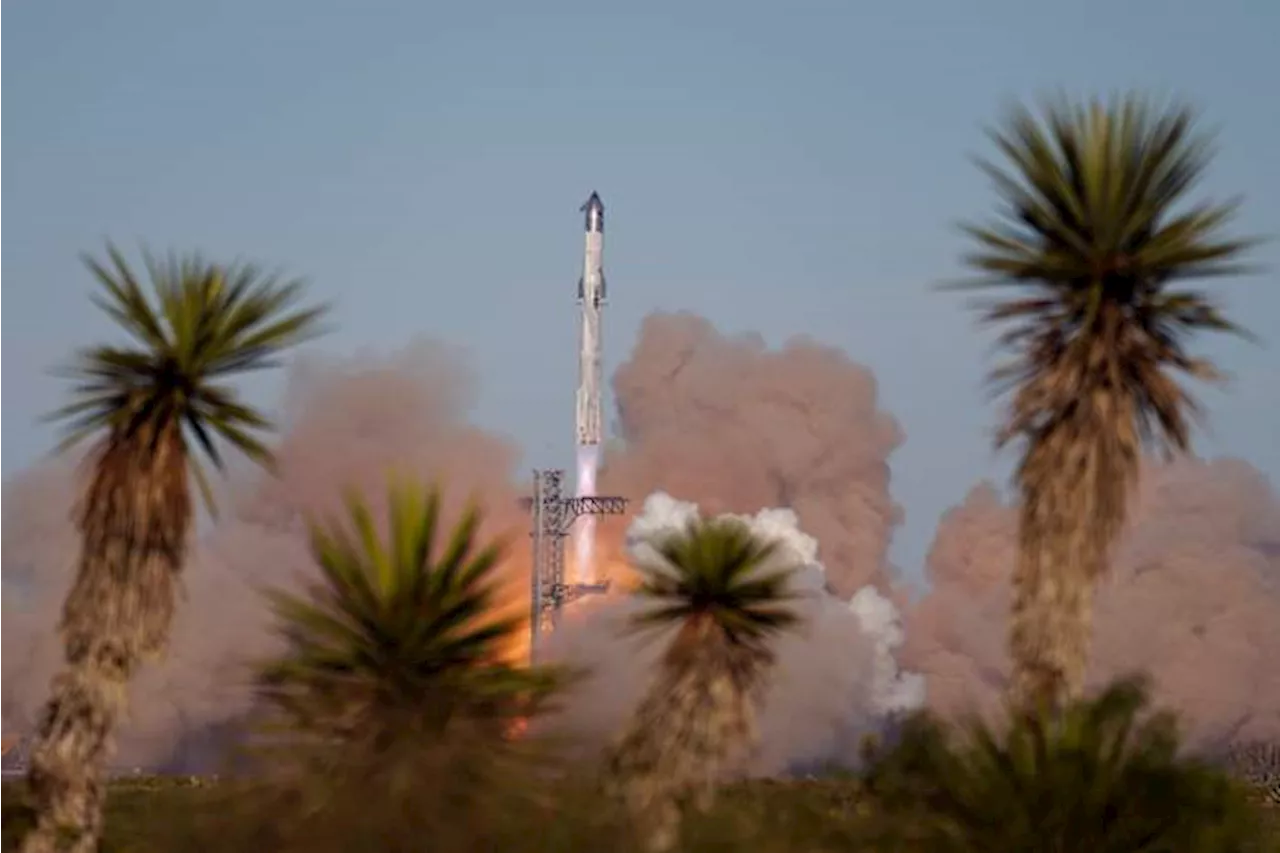 SpaceX's Starship Rocket Undergoes Test Flight, Loses ContactSpaceX successfully launched its Starship rocket for a test flight, aiming for a near loop around the world. The mission included 10 dummy satellites and targeted the Indian Ocean for a controlled end. Contact with the spacecraft was lost, marking the seventh test flight for the world's most powerful rocket.
SpaceX's Starship Rocket Undergoes Test Flight, Loses ContactSpaceX successfully launched its Starship rocket for a test flight, aiming for a near loop around the world. The mission included 10 dummy satellites and targeted the Indian Ocean for a controlled end. Contact with the spacecraft was lost, marking the seventh test flight for the world's most powerful rocket.
Read more »
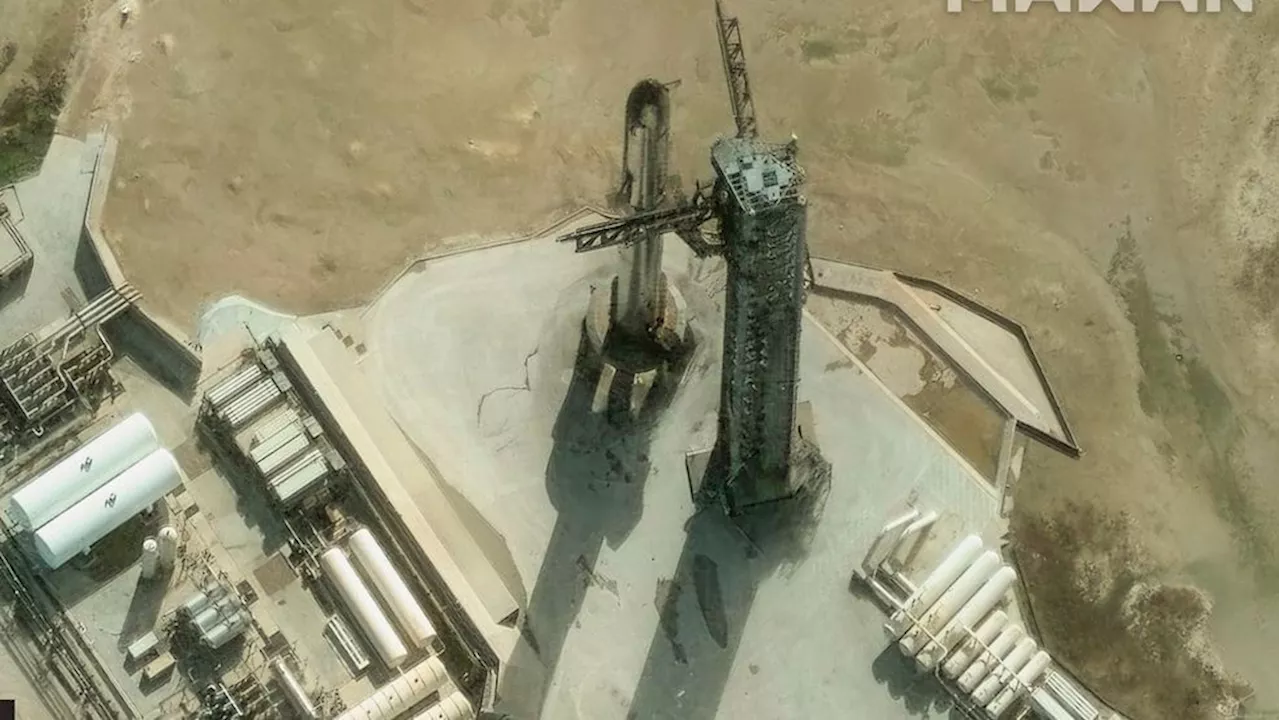 SpaceX's Starship Rocket Launches, Captures Booster but Loses ContactSpaceX successfully launched its Starship rocket on a test flight, capturing the booster stage upon its return but losing contact with the upper stage as it ascended. The spacecraft, carrying 10 dummy satellites, was designed to perform a near-loop around the world over the Gulf of Mexico, ending in a controlled destruction in the Indian Ocean. This was the first flight of the upgraded spacecraft, featuring reinforced catch tower and modified design. SpaceX plans to utilize the Starship for deploying Starlink satellites, followed by other missions involving various payloads and eventually crewed spaceflights.
SpaceX's Starship Rocket Launches, Captures Booster but Loses ContactSpaceX successfully launched its Starship rocket on a test flight, capturing the booster stage upon its return but losing contact with the upper stage as it ascended. The spacecraft, carrying 10 dummy satellites, was designed to perform a near-loop around the world over the Gulf of Mexico, ending in a controlled destruction in the Indian Ocean. This was the first flight of the upgraded spacecraft, featuring reinforced catch tower and modified design. SpaceX plans to utilize the Starship for deploying Starlink satellites, followed by other missions involving various payloads and eventually crewed spaceflights.
Read more »
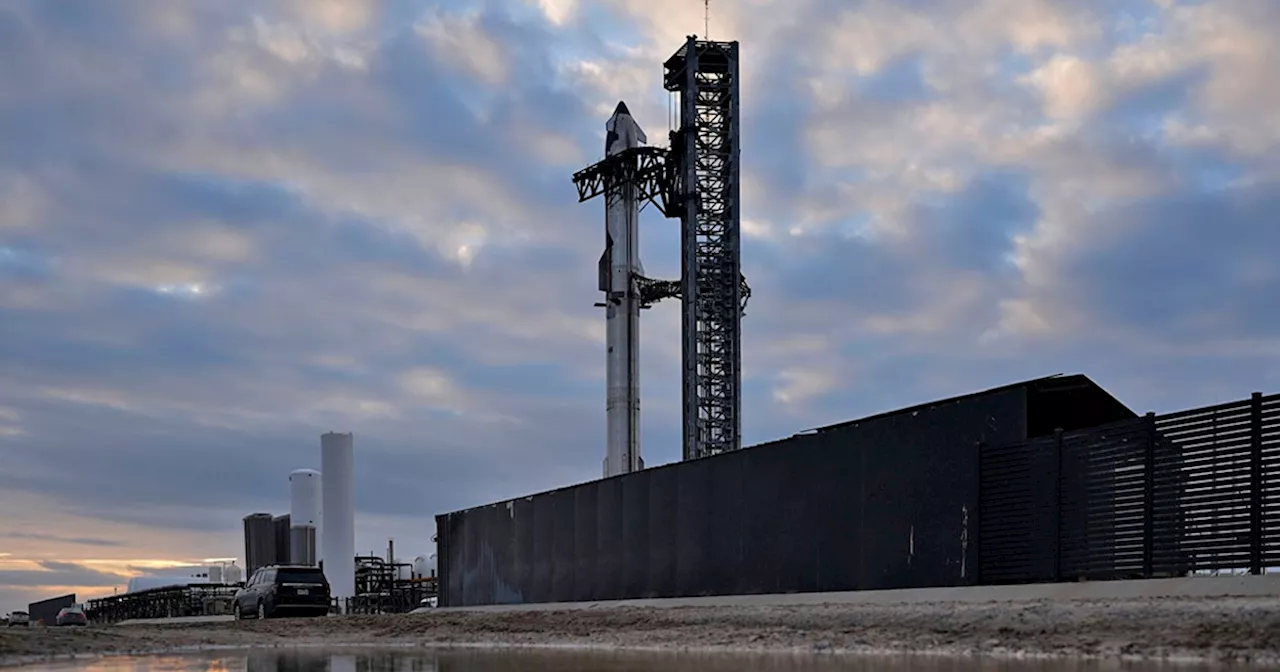 SpaceX Loses Contact with Starship During Seventh Test FlightSpaceX launched the seventh test flight of its Starship rocket, aiming to develop the massive vehicle further, including testing its satellite deployment capabilities. While the rocket's booster landed successfully, SpaceX lost communication with Starship shortly after launch. The company was planning to deploy 10 Starlink simulators, mimicking the weight and trajectory of actual satellites, to assess Starship's capabilities for future Starlink deployments.
SpaceX Loses Contact with Starship During Seventh Test FlightSpaceX launched the seventh test flight of its Starship rocket, aiming to develop the massive vehicle further, including testing its satellite deployment capabilities. While the rocket's booster landed successfully, SpaceX lost communication with Starship shortly after launch. The company was planning to deploy 10 Starlink simulators, mimicking the weight and trajectory of actual satellites, to assess Starship's capabilities for future Starlink deployments.
Read more »
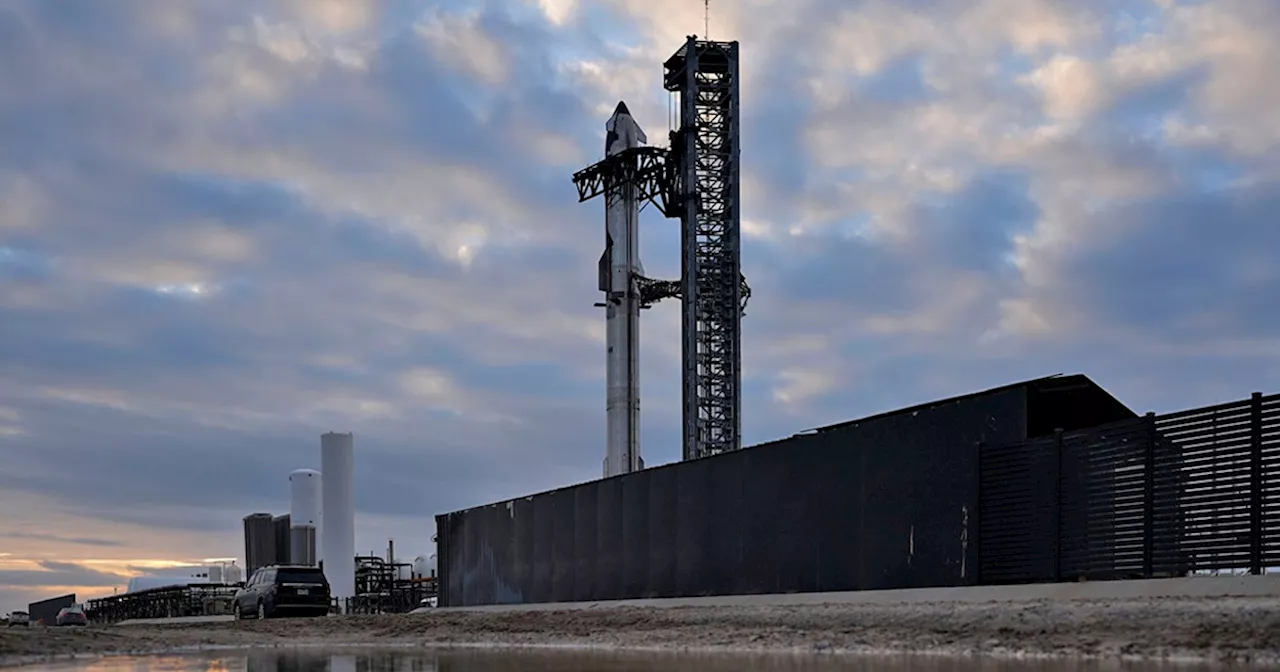 SpaceX Loses Communication with Starship During Seventh Test FlightSpaceX launched the seventh test flight of its Starship rocket, aiming to advance development and test satellite deployment capabilities. While the rocket's booster successfully landed, communication with the Starship upper stage was lost nine minutes into the launch. SpaceX is investigating the cause of the communication loss but assumes the ship has been lost. The flight carried 10 'Starlink simulators' to test the rocket's ability to deploy satellites.
SpaceX Loses Communication with Starship During Seventh Test FlightSpaceX launched the seventh test flight of its Starship rocket, aiming to advance development and test satellite deployment capabilities. While the rocket's booster successfully landed, communication with the Starship upper stage was lost nine minutes into the launch. SpaceX is investigating the cause of the communication loss but assumes the ship has been lost. The flight carried 10 'Starlink simulators' to test the rocket's ability to deploy satellites.
Read more »
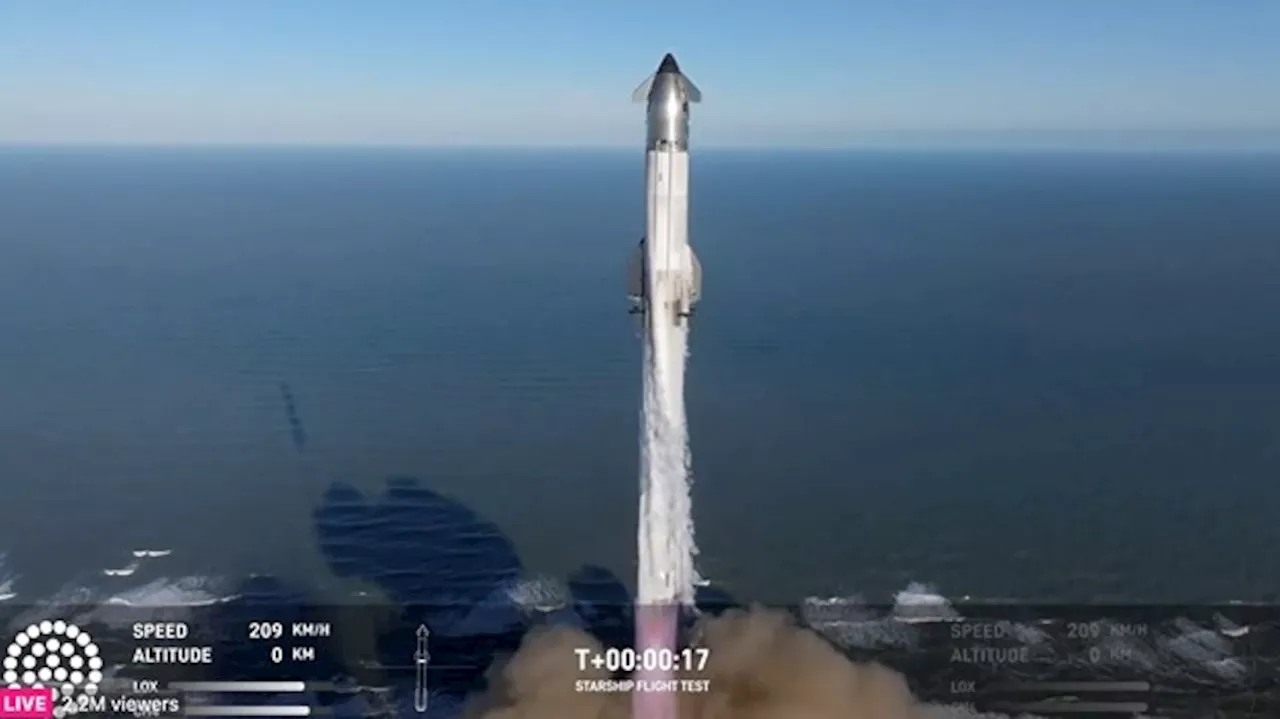 SpaceX Starship Lost in Fiery Launch AttemptSpaceX's ambitious Starship, touted as the most capable and fully reusable rocket ever, experienced a setback during its seventh flight test. While the first stage booster successfully landed, communication with the Starship was lost minutes into the mission, leading SpaceX to believe the spacecraft is lost. The incident occurred during a test flight designed to evaluate the updated Starship's capabilities, including its heat shield and payload deployment.
SpaceX Starship Lost in Fiery Launch AttemptSpaceX's ambitious Starship, touted as the most capable and fully reusable rocket ever, experienced a setback during its seventh flight test. While the first stage booster successfully landed, communication with the Starship was lost minutes into the mission, leading SpaceX to believe the spacecraft is lost. The incident occurred during a test flight designed to evaluate the updated Starship's capabilities, including its heat shield and payload deployment.
Read more »
